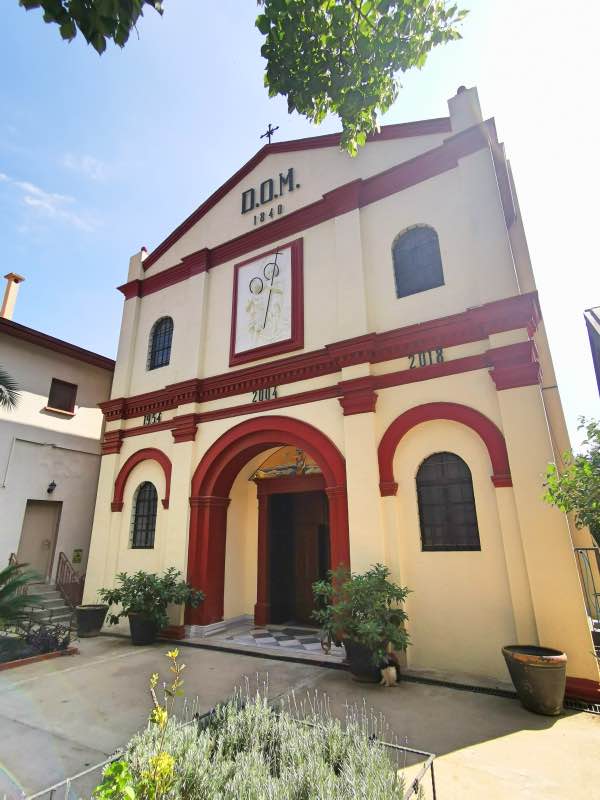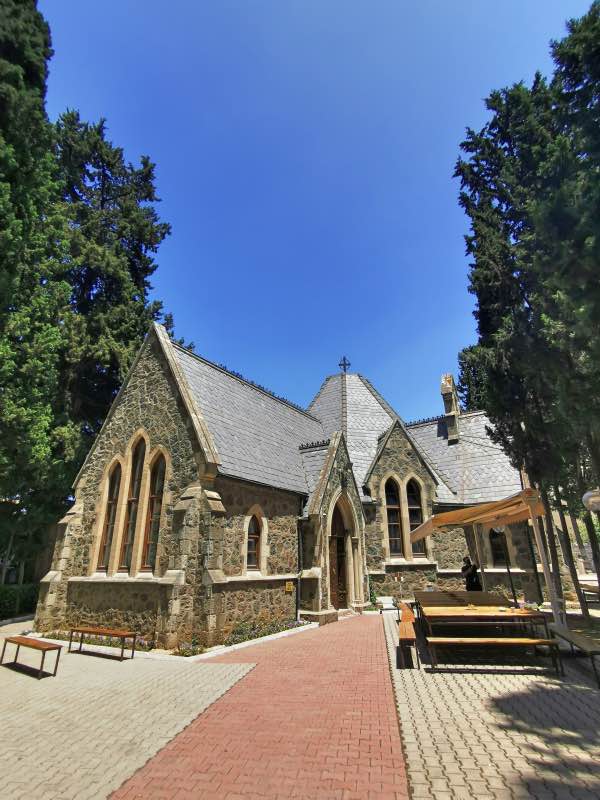From Lydians to Romans, from Levantines to Emigrants, with its multicultural structure, nature, mansions, historical sites, parks, Buca is one of the places you should definitely add to your route in your Izmir trip. 10 very valid reasons to explore Buca This article is waiting for you with details!
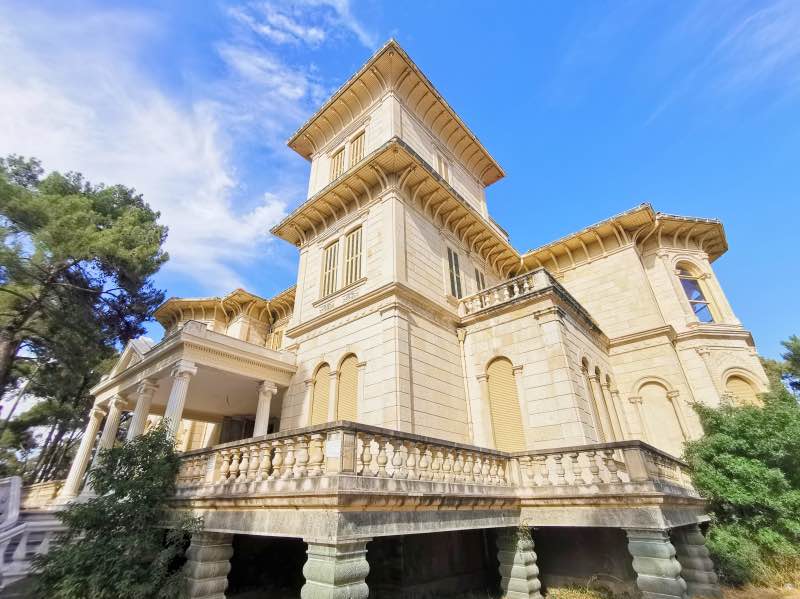
“Why should I go to Buca?” Don't say I hear you say. Why Buca I have explained the answer to the question item by item in this article, keep reading! If you say this is not enough for me; What to eat and where to eat in Buca? ve Places to Visit in Buca and Buca Travel Guide Be sure to check out my articles.
1. Cool and Clean Air, Green Villages
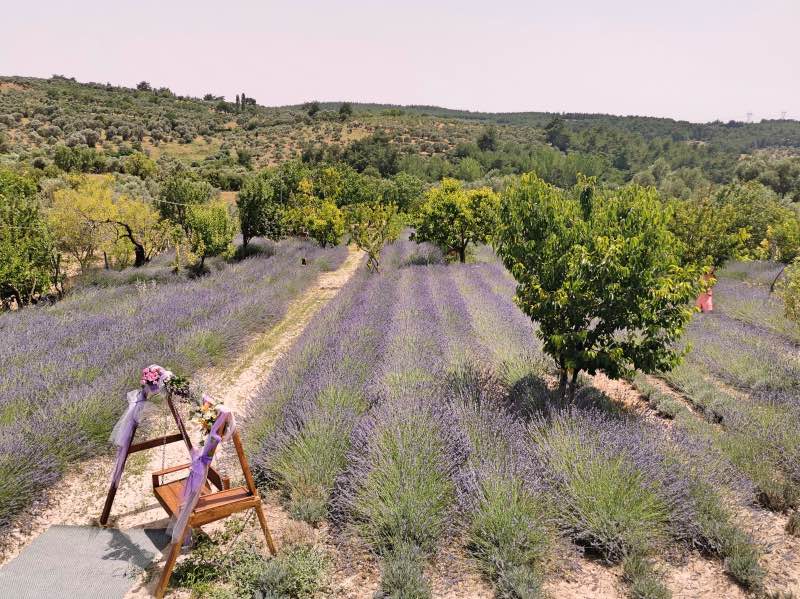
For those who are overwhelmed by the heat of Izmir, Buca is only 100 meters higher than the city center of Izmir, but is a few degrees cooler than Izmir. Most of the Levantine families who came to Izmir preferred Buca for its cool and clean air. They even named the tennis club they founded in Buca as Güzel Hava Club. Buca has been a water supply point to Izmir throughout history. Water was carried to İzmir via Kızılçullu Paradiso Aqueducts and Manavur Waterway. The reason why there are many aqueducts in Buca is that water can be transported to İzmir.
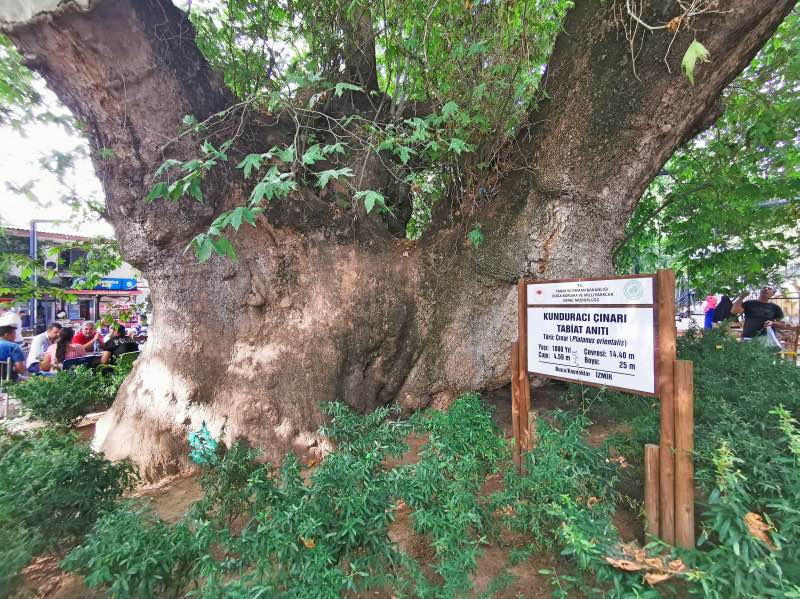
With a short car ride from the center of Buca, you reach lush green villages as if they change size. While Belenbaşı and Kırklar nomadic villages were settled after the proclamation of the Republic, Kaynaklar, Karacaağaç and Doğancılar villages defy time with their deep-rooted history. Fruit and vegetables are grown in all these villages. You can find many products from cherries to okra, from lavender to grapes, fresh in season. Fresh fruits and vegetables are brought from these villages to the producers' market held on Thursdays in Butchers Square in the center of Buca, you can buy them directly from the villagers. If you go to the villages at the end of June and the beginning of July, you can take incredible pictures among the purple flowers of the lavender fields. Do not forget to see the monumental plane tree over 1000 years old in Kaynaklar Village square.
2. The Mansions of Famous and Populated Levantine Families

The ancestors of the founders of the world-famous Forbes Magazine lived in Buca.
Levantines is the name given to European Christians who came to the Mediterranean Basin in the 19th century and were mainly engaged in trade. The British, Dutch, French and Belgian Levantines energized both commercial and social life in the regions they came from, and brought the cultural life of the West to Buca. With its clean and cool air, Buca has become one of the places where Levantine families prefer to settle. Today, there are many Levantine mansions open to visitors or still used as public buildings in Buca. The most popular of these mansions are; Baltazzi Mansion used as the Buca Anatolian High School building, Aliotti Mansion in Hasan Ağa Garden, Rees Mansion used as the Rectorate of 9 Eylül University, Forbes Mansion, which belongs to the ancestors of the world-famous Forbes magazine, Fargoh Mansion (Pink) serving as Buca Municipality Culture and Art Center. Mansion), Russo Mansion, Barff Mansion serving as the National Flag Museum, De Jongh Mansion, Blackler Mansion, Balladur Mansion, Sponza Mansion, Manoli Hotel, Gavrili Mansion, Mansion 1857 are the mansions that you can see from inside or outside today.

Some parts of the movie "Veda", which tells about Atatürk's life, were shot in Buca. De Jongh Mansion, one of the famous mansions of Buca, serves as the SGK service building today. If you haven't seen the movie, I suggest you do.
3. The First Commuter Train to Serve in Turkey

I said that the Levantines also influenced the social life wherever they went. Levantine families pioneered the construction of a train line to Buca, first to reach the city center and then to carry freight. Thus, the first suburban train in Anatolia started to serve between Alsancak Paradiso and Buca. This line was built in the 1860s by the British Levantine Family Reesler, who still have their mansions in Buca.
4. Hosting the First Horse Races in Turkey
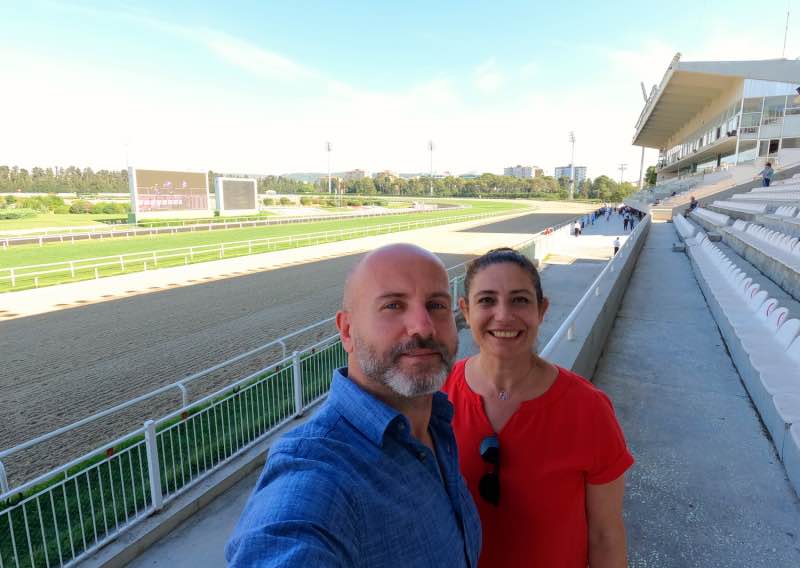
When people think of Buca, Şirinyer Hippodrome is one of the first places that come to mind. The first horse races in Turkey were held at Buca Şirinyer Racecourse. The first night races in Turkey started to be organized at Şirinyer Racecourse. If you wish, you can watch the night runs from the restaurants in the stands, accompanied by eating and drinking.
5. The First Tennis Club in Izmir, Hosting Golf, Tennis and Athletics Competitions
Buca stands out with its firsts in sports activities. Buca Tennis Club, which still continues to operate, was established in Buca under the name of Güzel Hava Club as the first tennis club in İzmir in the early 1900s. The first golf and tennis competitions and athletics races in İzmir were held in Buca under the leadership of Levantine families.
6. Home to Three Christian Churches
Latin Church Protestant Church
Buca is one of the rare Anatolian cities where Protestant, Orthodox and Catholic churches are side by side on the same street. Since most of the Levantine families from different countries belonged to different sects, they built their own churches after settling in Buca. Italian Catholic Church – The Dom is a church that draws attention with its resemblance to the Vatican, built by the Italian families living here and decorated with their own efforts. If you want to go and see it, you have to call ahead and make an appointment. The mosque, which serves as the Muradiye Mosque today, was the Old Orthodox Church in the name of Müjdeci Yahya. Since it is a mosque, you can visit it as you wish, within the framework of respect. The Protestant Church of All Saints, which has a congregation of 120 people, is an active church today, you can contact the pastor of the church by calling in advance, he tells the history of the church with pleasure. There is another church very close to Dokuzçeşmeler Square, but only its door remains today.
7. Establishment of One of the First Village Institutes
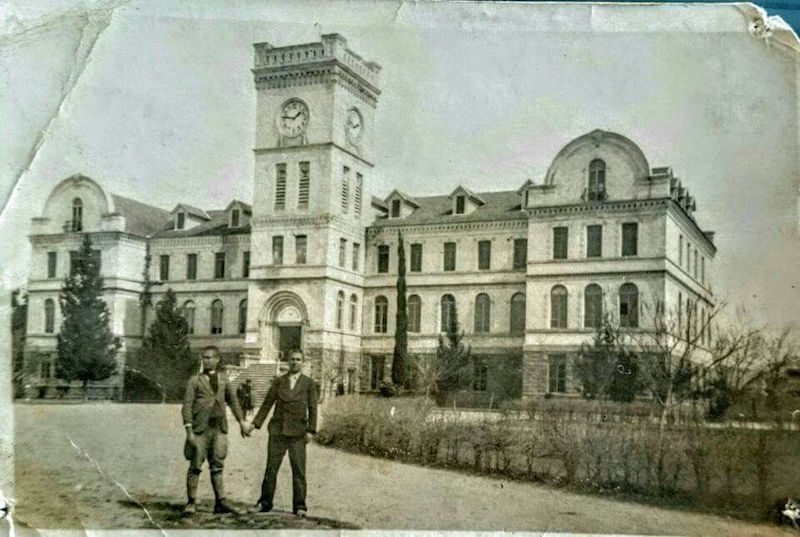
Kızılçullu Village Institute, one of the first village institutes in Turkey, was established in Buca. In the first years of the Republic, courses were opened so that the teachers who went to the villages could learn about the village life and be trained accordingly, but the courses alone were not enough. in Eskişehir, Çifteler, İzmir and Kızılçullu, which will form the core of Village Institutes in 1937. “Village Teacher Schools” was established. These first 4 schools were established for trial purposes. On April 17, 1940, the Village Institutes Law was passed by the parliament and these schools were given the status of institutes. In 1954, all Village Institutes across the country were abolished with Law No. 6234. After telling this story briefly, let me talk about Buca Kızılçullu Village Institute. In January 1937, the Ministry of Culture bought the Kızılçullu American College building, which was closed in 1934 and was idle, in order to open a teacher's school. In the 1940s, the Kızılçullu Village Institute had 36 buildings, including 4 buildings and 40 barracks, and the number of buildings in the school on a 200-decare land later increased to 46. The land on which the school is located was given to NATO after Turkey joined NATO in 1952. The building is still in NATO's use, located in the Vecihi Akın Barracks in Şirinyer, and unfortunately it is not possible to visit the land and buildings within the military zone.
8. Neighborhoods That Smell History

Dumlupınar Neighborhood, where Levantine culture and architecture continues, is one of the must-see places in the center of Buca. Many of the historical houses have undergone restoration. Side streets are very convenient to see restaurants, cafes, hotels, wine houses and old buildings that serve as second-hand booksellers, both from the inside and outside, and to take photos. Make sure to include the Yanıkkahveler area in Dumlupınar Neighbourhood, where the old Greek houses are predominantly located, in your route. Here, the neighborhood culture is still alive, and small shops, from grocery stores to shoemakers, have been welcoming their customers unchanged for years.
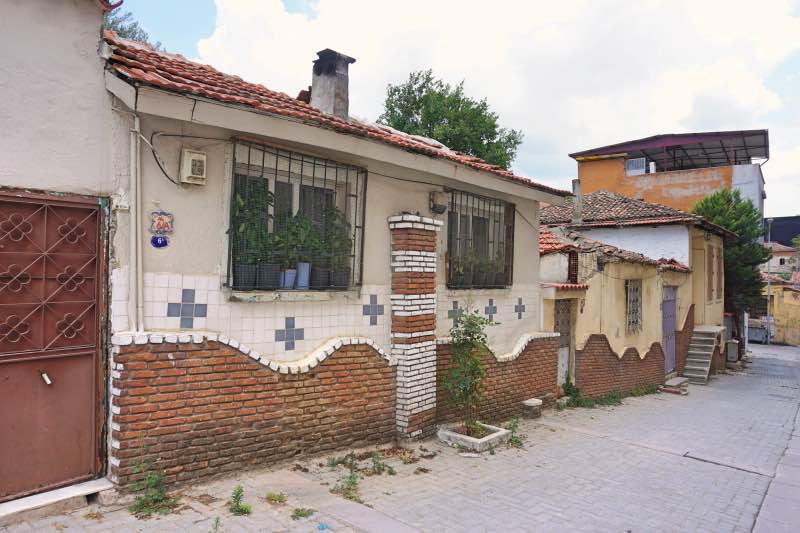
Another neighborhood worth seeing in Buca is Yaylacık Neighborhood, where immigrants from Thessaloniki settled during the population exchange period. Immigrants who settled here by building houses similar to their homes in Thessaloniki managed to preserve this architecture for many years, but now there is only one island left, you should see Yaylacık before those houses fall victim to urban transformation.
9. Breathtaking Parks
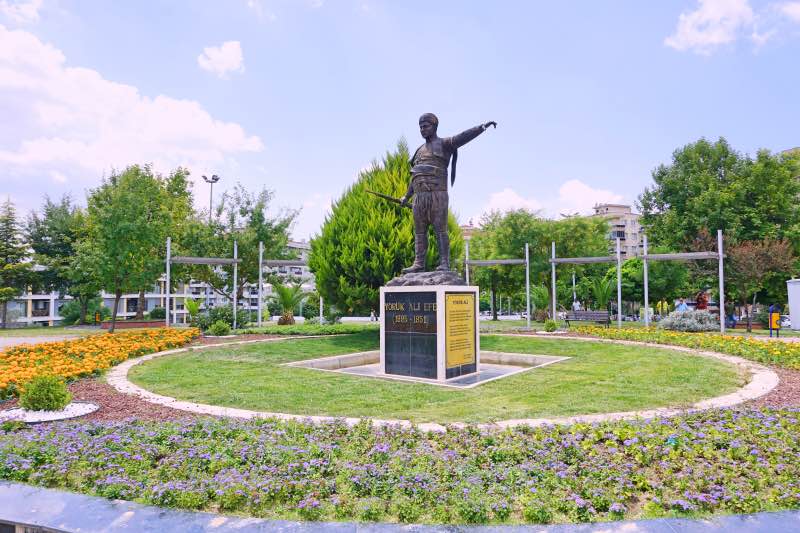
Since Buca is located 100 meters higher than the center of Izmir, it is cooler and the air is much cleaner. In addition, with its huge parks located both in the center and in its villages, it allows the residents and visitors to be intertwined with greenery.
- The biggest park in the center of Buca Hasan Aga Garden. While the garden was the garden of an old Levantine mansion, today it is a place where the people living here breathe with its walking and cycling paths.
- When you go out from the center of Buca towards Yaylacık Neighborhood, there is the Mevlana Statue, where you can see all of Buca under your feet. Tingir TepeIt is a wonderful spot where you can watch the scenery among the pine trees. Here, you can have breakfast, dine or drink tea and coffee at very affordable prices at Neva Cafe, which is operated by the municipality. Petros Tıngıryan, after whom Tıngır Tepe is named, is a philosopher who lived in Buca for 40 years, developed his own language believing that all humanity should speak one language for world peace, and lived in seclusion in his house on this hill until the end of his life.
- Located in Efeler Mahallesi Yoruk Ali Efe Parkis a park where you can spend time in greenery in the city. Yörük Ali Efe settled in Buca after the establishment of the Republic at the request of Mustafa Kemal Atatürk, and the name of the neighborhood comes from here. There is also the Priest's Tower in the park, there used to be a Priest's School here, but now there is nothing left.
- Another point where you can breathe on the way from Buca center to Kaynaklar Village. Buca Pond. The place where the pond is located is designed as a green area. In addition to areas where visitors can have picnics and play games, there are also two restaurants, namely Ada Cafe and Göl Restaurant, operated by the municipality.
- There is another facility in the vicinity of Kaynaklar Village: Buca Scouting and Outdoor Sports Center. This is a facility with climbing walls in greenery under ancient plane trees, a zipline for children, a mini creek, bungalow houses and tree houses. Dere Cafe, also operated by the municipality, provides budget-friendly service here.
10. Modern Museums
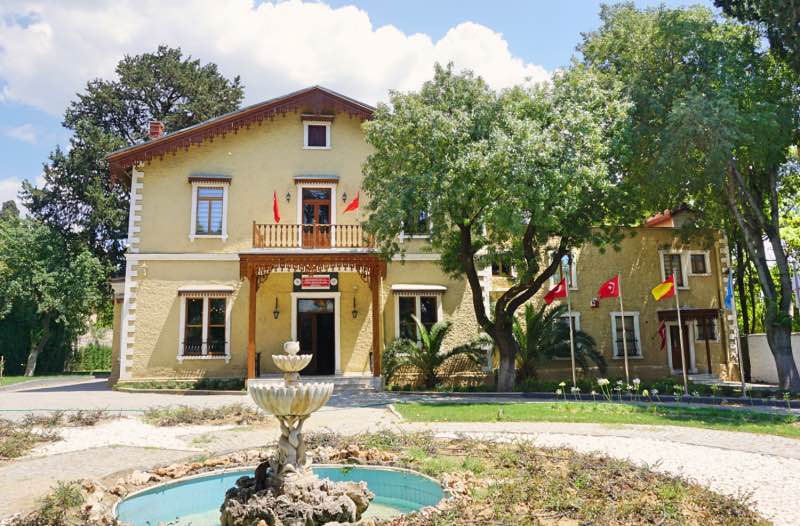
We visited neighborhoods, mansions and parks in Buca, but what about museums? There are two museums in Buca that I would definitely recommend you to see: The first is Immigration and Exchange Memorial House. An old building in Butchers Square has been converted into a museum. What happened during the exchange period was told interactively, and very impressive stories were combined with the items left over from the exchange. Especially if you have immigrants in your family, I definitely recommend you to see it, the entrance to the museum is free. Another museum is a first in Turkey. Bayrakscience and Turkish Flags Museum. An old Levantine mansion serves as a museum building. The story of the Turkish flag is told interactively, both the building and the museum are very beautiful and impressive.
Give Izmir's little-known district Buca a chance, I'm sure you won't regret it!
Stay on the Road!

